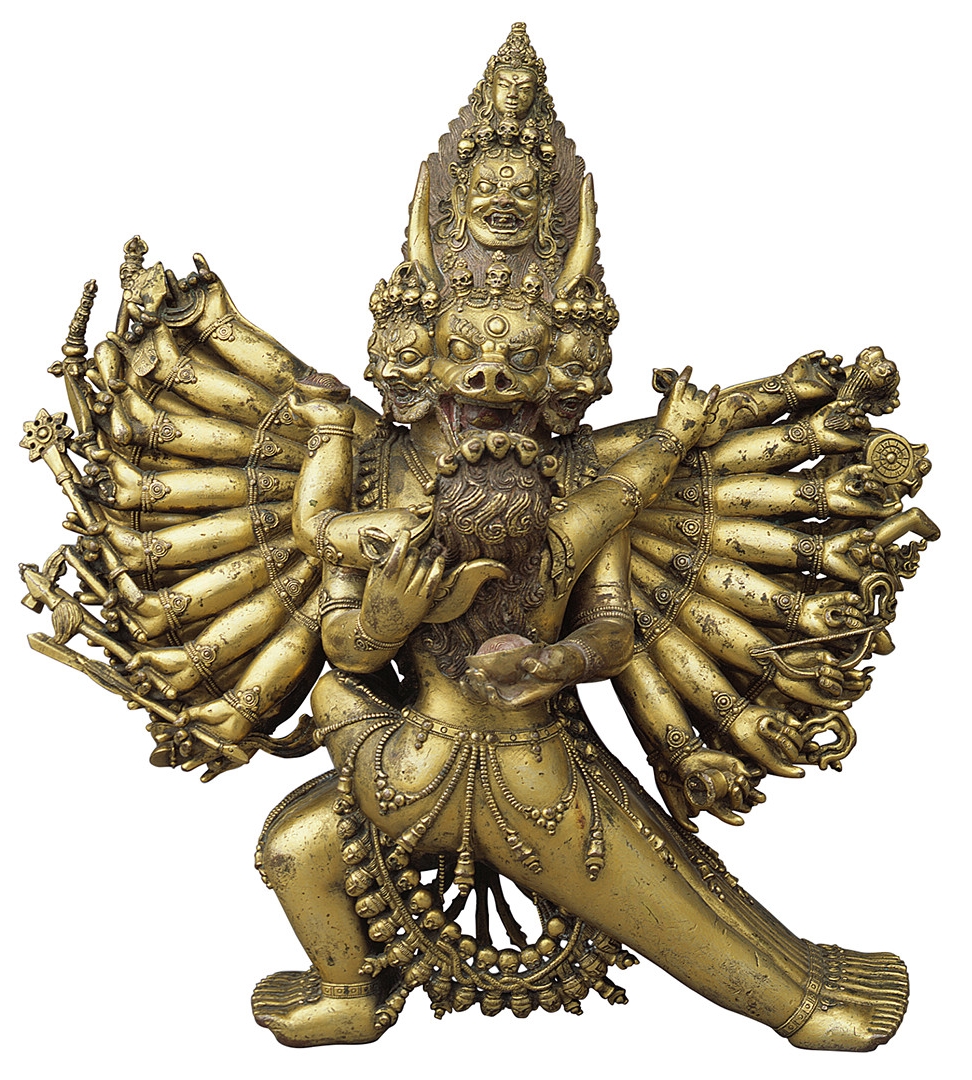
Vajrabhairava is the most prominent deity in Gelug tradition and this specific form is based on a vision of Tsongkapa (1357–1419), the tradition’s founding teacher. Vajrabhairava is the wrathful emanation of the bodhisattva of Wisdom, Manjushri. He took on this form by reflecting back the terrifying nature of the Lord of Death Yama and thus overwhelming and subduing Yama, who became a protector of Buddhist faith. Yama’s form with a buffalo head, thirty-four hands all wielding different implements, is topped by Manjushri’s own head signifying his true nature.
Vajrabhairava was especially popular in Mongolia where Gelug tradition was prevalent.
Addition to the above to use in the online version in Collection: This large well-proportioned sculpture is a good example of Mongolian craftsmanship of the 17th and 18th centuries.
H 14 1/8 x W 12 5/8 x D 5 3/4 in.
C2005.25.1 , HAR 68853
- https://dev.rubinmuseum.org/images/content/3643/c2005.25.1har68853_front_lg__zoom.jpg
- https://dev.rubinmuseum.org/images/content/3643/c2005.25.1har68853_front_lg__zoom.jpg

